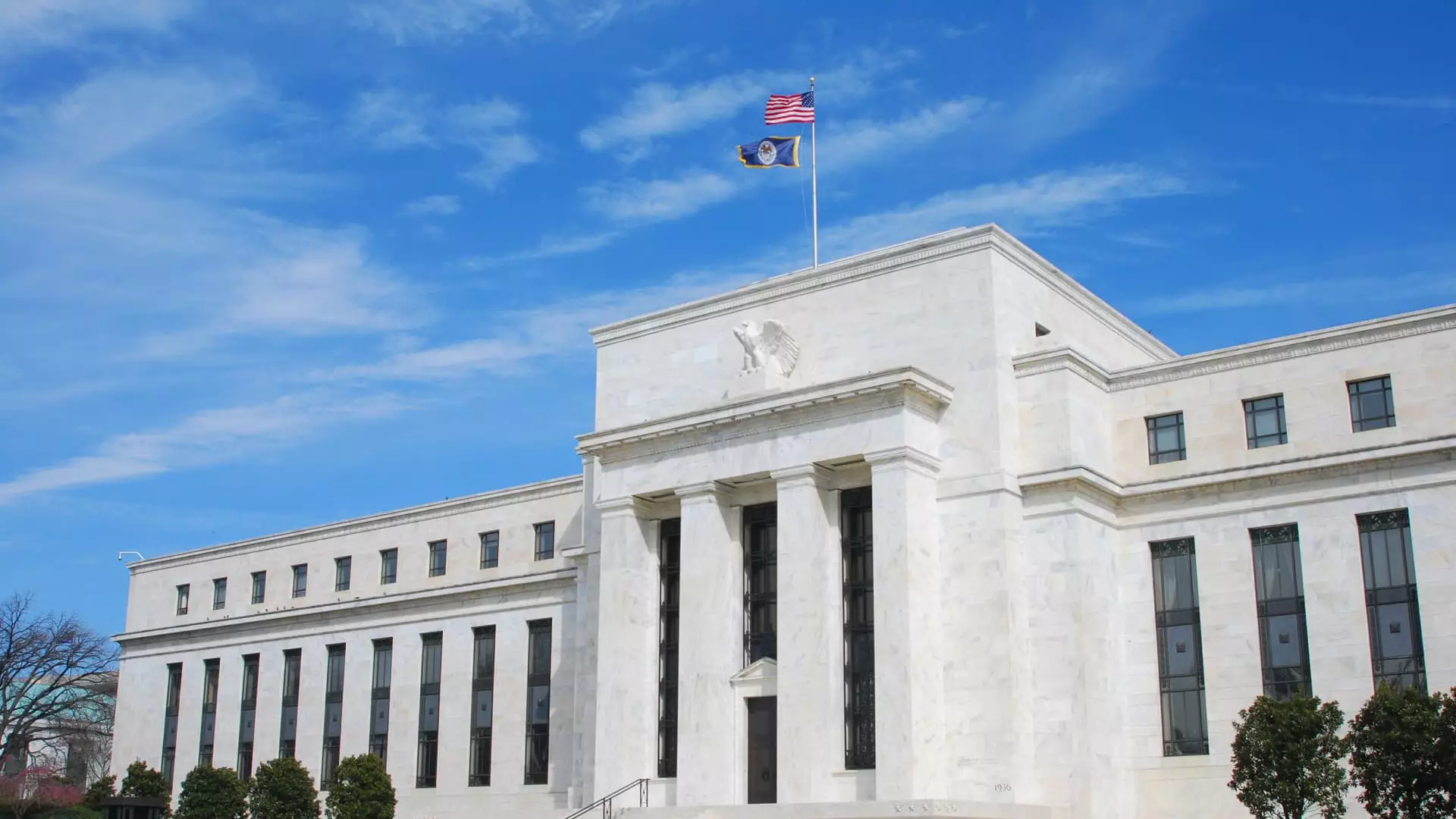As the Federal Reserve convenes for its upcoming two-day meeting, there’s an air of illusion surrounding the decision to keep interest rates steady. While recent drops in inflation figures might offer a glimmer of hope, the undercurrents of a brewing trade war and increasing tariffs threaten to undermine any sense of stability. Monetary policy must react to the realities of the marketplace, not simply admire fleeting statistics. The contradiction in attempting to maintain stability while the ground shifts beneath us is baffling, and could very well signify a miscalculation that may have dire consequences for American consumers.
Economist Andrzej Skiba notes that the “tariffs on Europe and universal ones to follow suit” are impending, and I wholeheartedly agree. These tariffs will inevitably raise prices across numerous sectors, turning the current state of relative tranquility into a catalyst for inflation. If the Federal Reserve is adopting a nonchalant attitude during this critical time, they risk failing the very consumers they are supposed to protect, leading to dire economic repercussions.
Consumer Stress: The Silent Crisis
Greg McBride, a chief financial analyst at Bankrate.com, articulated what many consumers are painfully aware of: “Consumers are stretched and stressed.” This sentiment should not be taken lightly. The Federal Reserve may boast about its control over interest rates, but the reality for many Americans is a constant struggle against rising costs. A modest drop in interest rates should arguably result in decreased borrowing costs—yet this is not the full narrative.
The pressures of the current economic climate, exacerbated recently by the barrage of tariffs and trade tensions, place consumers in a precarious position. Reduced borrowing costs, even if they materialize in the future, seem too little, too late for those already squeezed by credit card debt and soaring prices. For countless families, every financial decision is a balancing act against unforeseen challenges, making the Fed’s decision to hold rates steady appear tone-deaf.
Rising Debt and its Detriment
One could argue that the Fed’s complacent stance exacerbates an existing crisis in consumer debt. While it’s true that the average rate on a 30-year mortgage fell marginally from earlier this year, the underlying issues remain. The costs associated with various forms of debt have not vanished; they have simply evolved, as illustrated by recent alarming statistics. Revolving debt has surged 8.2% year-over-year, a figure that cannot be ignored, indicating a growing reliance on credit to manage daily expenses.
Considering that average credit card interest rates hover around 20%, the financial strain on consumers intensifies. It’s concerning that even as the Fed has opted to pause rate cuts, the comforting narrative surrounding declining rates isn’t fully reflective of consumer experiences. The narrative surrounding monetary policy should be less about maintaining rates for the sake of stability and more focused on addressing the tangible impacts of debt on everyday Americans.
The Illusion of Lower Rates in Real-World Implications
While it may be tempting to view lower mortgage rates as a positive development, it’s important to realize that this relief is juxtaposed against a backdrop of escalating consumer goods prices. A mortgage rate of 6.77% might appear lower in isolation, but it becomes less impressive when awareness of trade wars and potential tariffs creeps in. Consumers are hardly benefiting from lower borrowing costs when they face increased expenses elsewhere.
Further complicating matters is the reality that auto loans—fixed rates notwithstanding—have seen average rates trend downward to 7.42%. However, this provides little comfort for potential car buyers faced with the reality of high prices due to external pressures originating from trade policies. The Fed’s role should encompass understanding the broader implications of financial markets, not merely patching up perceived leaks in interest rates.
Student Debt: A Hidden Burden
As discussions about consumer debt trend toward mortgages and credit cards, the burden of student loans often looms large, yet remains in the shadows. The increase in federal student loan rates, now pegged at 6.53%, can drastically change the lives of upcoming graduates. While the Fed holds rates, educational costs rise—adding yet another layer of complexity to America’s financial landscape.
This disconnect between educated financial decisions and their real-world implications requires urgent attention from policymakers. Young graduates are emerging into a workforce that is already rife with challenges, and punitive interest rates on student loans only serve to further encumber their prospects for financial success.
In this complex tapestry, the Federal Reserve’s strategy of holding interest rates steady may appear cautious, but it ultimately risks creating an economic landscape that benefits very few while punishing many. The looming threats from trade wars, rising consumer debt, and stagnant wages highlight the pressing need for action. It is time for the Fed to reevaluate its approach and truly consider the daily realities faced by American families navigating through uncertain economic waters.

